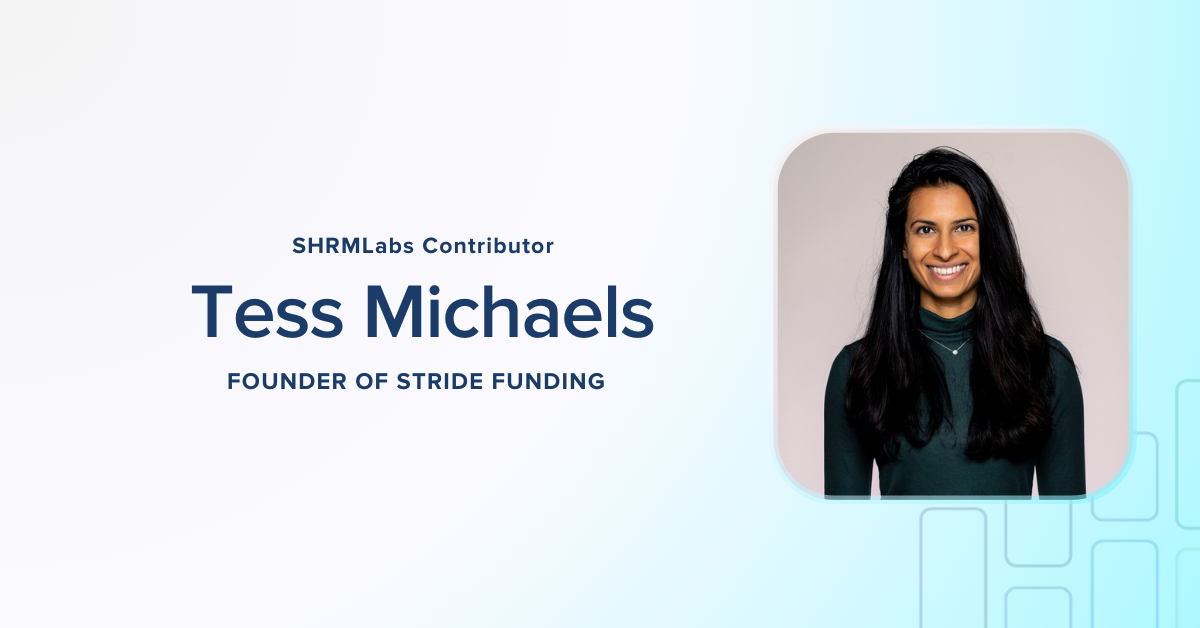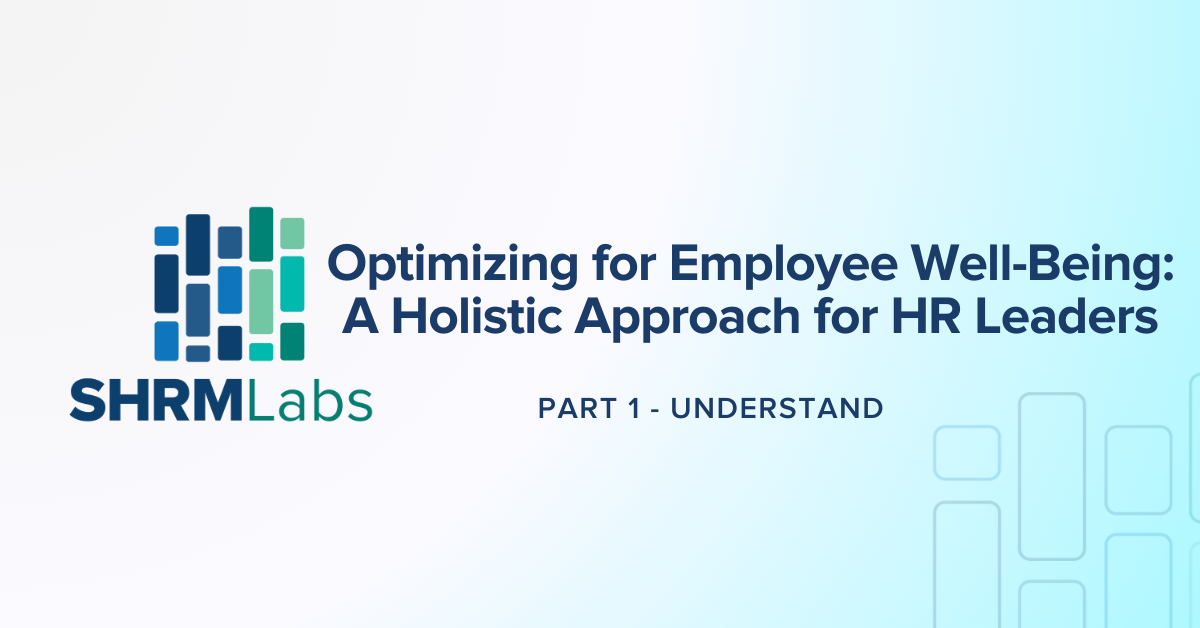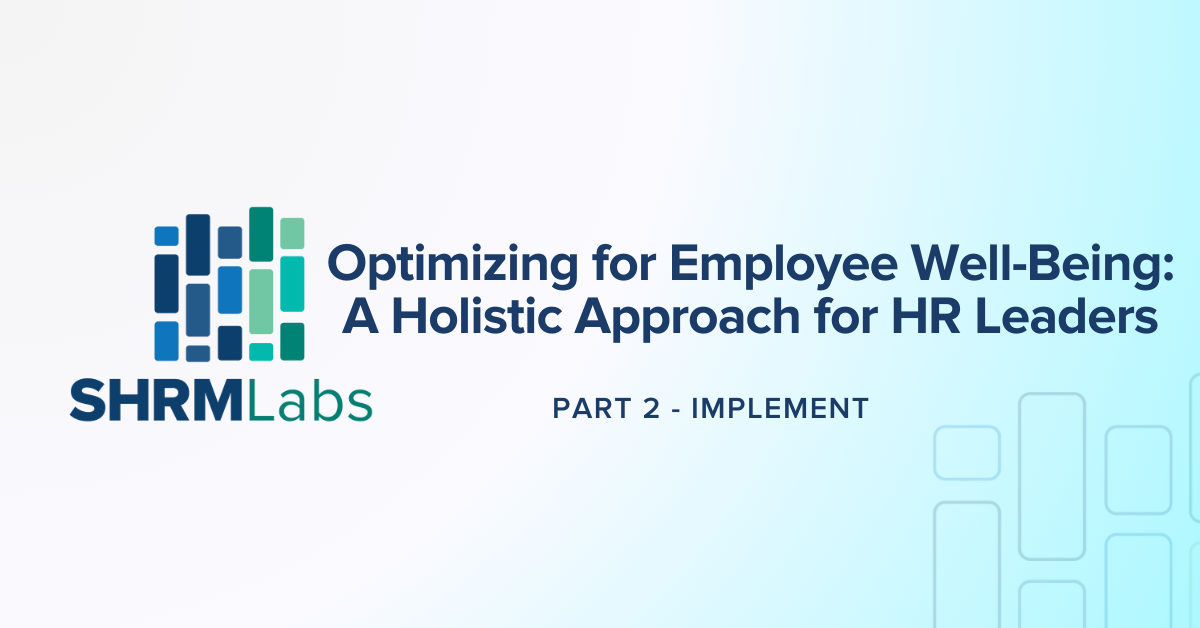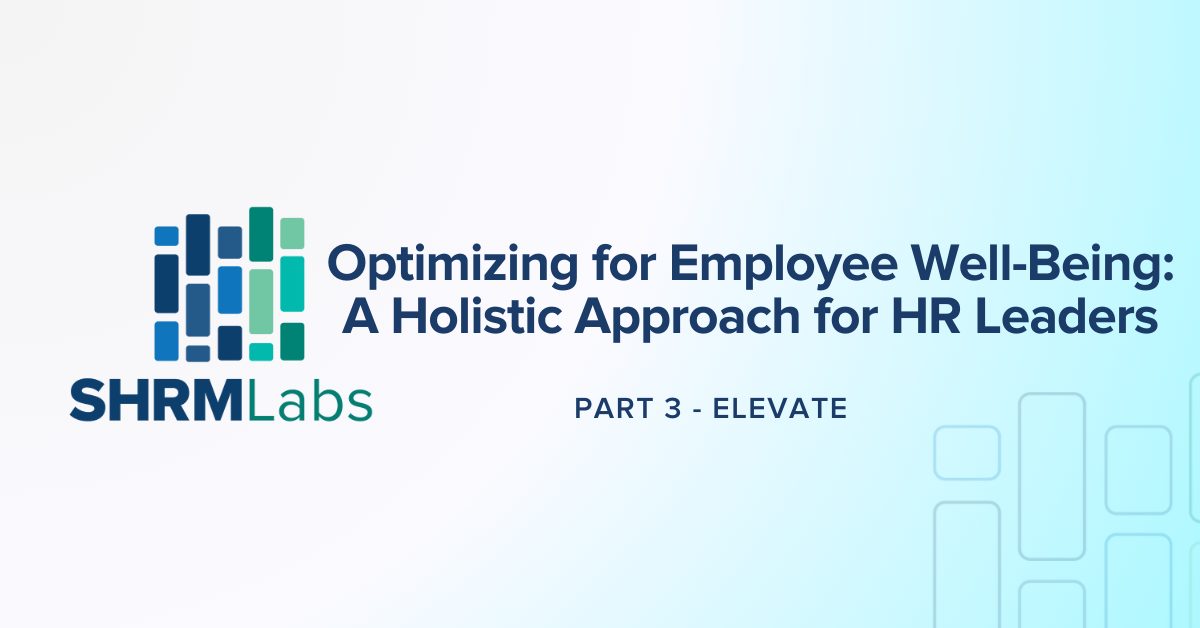Building Sustainable Talent Pipelines in Health Care
Before we begin…
Welcome to the WorkplaceTech Pulse, presented by SHRM Labs. We are expanding our resources to bring you the best possible information from leaders in HR technology and transformation.
My name is Nell Hellem, innovation catalyst at SHRM Labs. You will hear from me as well as my colleagues every other week with the release of each new edition. Let us know any topics you’d like to hear about related to workplace tech and we will consider them for future editions of the WorkplaceTech Pulse.
Introduction
In a health care landscape fraught with talent shortages, the strain on hospitals and clinics is palpable. The demand for skilled professionals far outweighs the available workforce, posing significant challenges for HR leaders and health care executives alike. Projections indicate a looming crisis, with the U.S. health care sector facing a shortage of 3.2 million workers by 2026. Traditional recruitment methods offer short-term relief but fall short in addressing the long-term sustainability of talent pipelines. However, innovative approaches such as educational partnerships, gig nursing, and mental health support programs are emerging as promising solutions. One such solution gaining traction is employer-sponsored student loan programs. These programs not only alleviate the financial burden of education for health care professionals but also foster loyalty and improve retention rates, directly incentivizing employment terms of more than three years after hire. By engaging with students early in their educational journeys, health care organizations can create predictable pipelines for future talent, ultimately enhancing patient care and organizational stability. As we navigate the complexities of the health care workforce crisis, employer-sponsored student loan programs offer a beacon of hope, promising to fill the talent gap while nurturing a sustainable workforce for the future.
I’m excited to introduce this edition’s contributor, Tess Michaels, founder of Stride Funding. Tess, over to you!
Thanks, Nell! I’m Tess Michaels, founder and CEO of Stride Funding, a mission-driven company dedicated to tackling the health care labor shortage. At Stride, we connect health systems, high-quality schools, and diverse talent to transform access to career pathways. Our innovative approach helps build and retain pipelines of talent while increasing access and affordability for students through employer-sponsored student loan programs.
Growing up in a health care family, I was inspired to create Stride from a student-first perspective during my time as an MBA student at Harvard Business School. Stride was founded on the principle that by bridging the gap between education and career outcomes, we can provide greater opportunities for both students and organizations. Our approach not only addresses the current talent crisis but also helps create a sustainable and thriving workforce for the future.
I am honored to be recognized as a member of Forbes’ 30 Under 30 in education, which highlights the impact and importance of our mission at Stride. Together, we are working to co-create a future where access to education and career opportunities in health care is equitable and transformative for all.
Be sure to check out all of our editions of the WorkplaceTech Pulse!
Imagine this: You walk into a hospital, and every staff member, from the nurses to the respiratory therapists, is stretched thin. One of the hospital wards has closed due to understaffing, meaning hundreds of patients in the community can’t get timely care. Despite their dedication, the sheer volume of patients and tasks is overwhelming. This is the reality for many health care facilities across the U.S. as the sector grapples with a severe talent shortage. For HR leaders, chief nursing officers, heads of talent acquisition, and more, it’s like trying to fill a leaky bucket—no matter how many staff members are brought in, the demand continues to outpace the supply.
Projections indicate that by 2026, the U.S. health care sector will face a shortage of 3.2 million workers (American Hospital Association). This crisis demands innovative solutions to attract and retain talent effectively.
The Labor Shortage and Its Impact
The numbers are staggering. This April, 20% of new jobs added were in health care, underscoring the critical demand for talent. The American Association of Colleges of Nursing projects over 203,000 openings for registered nurses each year through 2031. Meanwhile, the American Association for Respiratory Care predicts a loss of over 92,000 respiratory therapists by 2030.
And when it comes to entering the field, cost is a significant barrier: In a Pew Research Center study, nearly half of the respondents cited it as the main reason why they did not pursue postsecondary education. This financial hurdle makes it essential to find solutions that lower the cost of education for prospective health care professionals.
Traditional Recruitment Methods and Their Limitations
Traditional recruitment methods, such as providing sign-on bonuses, hiring contract labor, and offering post-hire tuition benefits, provide only short-term relief—they’re bandages, not long-term solutions. For example, in a Laudio Insights analysis of more than 50 U.S. hospitals, sign-on bonuses cost over $10,000 and created only $2,800 worth of retention value per employee, resulting in a 72% loss on investment.
A large national health care system we spoke to exemplifies this challenge: In a single year, it sought to grow its staff by 10,000 workers, but hired 72,000 and lost 67,000, resulting in a net increase of only 5,000 employees. Simply put, traditional recruiting methods are just not enough to make up the difference.
Innovative Approaches in Health Care
Of course, health care organizations are adopting several innovative strategies to tackle the shortage, including:
- Educational partnerships and upskilling. An Arkansas hospital launched an internal program to upskill administrative and janitorial staff to fill the acute shortage of respiratory therapists by owning one-third of the responsibilities. This approach allowed these employees to take on duties typically handled by respiratory therapists, effectively addressing the immediate staffing problem and creating more efficiencies in the system.
- Gig nursing. Several large hospital systems use gig nursing apps, similar to ride-hailing technology. Nurses can bid for shifts, and hospitals adjust pay based on supply and demand. This flexible model has successfully filled thousands of shifts.
- Recruitment from abroad. Health care systems across the U.S. recruit nurses from other countries such as the Philippines, providing support for immigration and integration into the U.S. health care system and helping to bridge the talent gap.
- Mental health and wellness support. Some organizations, including Mount Sinai Health System, offer programs with mental health services, stress management resources, and mindfulness training, aiming to reduce burnout and improve retention rates.
Understanding Employer-Sponsored Student Loan Programs
In 2022, Stride Funding started piloting another solution: employer-sponsored student loan programs. These programs reach talent early—while they’re still in school—and not only tackle acquisition and retention challenges for health care systems but also work to infuse new talent into the ecosystem by expanding access to and outcomes from education. Here’s how they work:
We match employers with students while they’re still in school and facilitate customized vetting. Employers then give an upfront commitment to repay these students’ education loans (federal or private) after graduation—and provide them with a future offer of employment, with the loans repaid in installments over a set period of retention (usually more than three years).
Not only do these programs significantly reduce the financial burden of education for health care professionals, making the field more attractive to new talent and fostering loyalty among existing staff, but they also measurably improve retention. In a case study of 500 sponsored employees on Stride’s platform, we saw a 94% increase in year-one retention, compared to sign-on bonuses that yielded only about a 5% increase in retention.
Creating Predictable Pipelines for Future Talent
We also found that students who participated in these programs drove a virtuous circle of interested new applicants. They became the employers’ best brand ambassadors, sharing real stories of impact and fostering a sense of loyalty and commitment that assisted in recruiting efforts and was crucial for delivering high-quality patient care during their careers.
Furthermore, by establishing relationships with students early in their educational journeys, health care organizations were able to anticipate when these individuals would enter the workforce. This predictability helps talent acquisition teams plan more effectively and reduces the need for last-minute, costly contract labor solutions. Think of it this way: Early engagement leads to higher job satisfaction and commitment, further enhancing retention rates and building a truly sustainable workforce.
The Financial Impact
The primary goal of employer-sponsored student loan programs is to address the talent shortage, but they also offer significant financial benefits to employers. By reducing turnover, dependency on sign-on bonuses, and the need for contract labor, these programs can lead to substantial cost savings.
For example, a health system with 150 open nursing roles investing $40,000 per nurse in student loan repayment assistance could see a cost savings of more than $5.7 million in the first year. This is based on average assumptions from market research on sign-on bonuses, salaries, recruiting spend, and cost to replace.
Furthermore, the modern workforce prioritizes work/life balance, professional development opportunities, and a sense of purpose. Employer-sponsored student loan programs align with these expectations by providing financial support for education and fostering a culture of growth and development. This means that not only do these programs help health care organizations stay competitive in the labor market, but the improved retention rates and employee satisfaction also contribute to better patient care and organizational stability, which in turn enhances the institutions’ financial health.
Conclusion
We can’t solve the talent crisis in health care alone, but employer-sponsored student loan programs stand out as a particularly powerful tool in directly tackling the leaky bucket. Approaches such as educational partnerships, gig nursing, innovative recruitment tactics, mental health support, and employer-sponsored student loan programs are all crucial pieces of the puzzle. By investing in these diverse strategies, health care organizations can build sustainable talent pipelines, reduce turnover, and ensure the delivery of high-quality care. But when we can meet talent early, support their education on the front end, and incentivize retention on the back end, we not only start filling the bucket, we also expand opportunities, ultimately growing the talent pool for everyone.
Thanks for joining us for this edition of the SHRM Labs WorkplaceTech Pulse and thanks to Tess for her incredible insight on how to solve the health care talent shortage. Please visit Stride Funding’s website to learn more about the work they are doing. We will see you next time!
Stride Funding is a venture-based, mission-driven financial technology company transforming access to education and career pathways. Stride is revolutionizing the way employers attract and retain critical talent while simultaneously tackling the student debt crisis.
A Forbes Fintech 50 company, Stride is driven by our commitment to social impact and innovation. We are reshaping the path to economic mobility. Learn more.

SHRM Labs, powered by SHRM, is inspiring innovation to create better workplace technologies that solve today’s most pressing workplace challenges. We are SHRM’s workplace innovation and venture capital arm. We are Leaders, Innovators, Strategic Partners, and Investors that create better workplaces and solve challenges related to the future of work. We put the power of SHRM behind the next generation of workplace technology.
Related Articles
Part 1 - Understand. Delve into the fundamentals of employee well-being, offering HR professionals a comprehensive understanding of this critical aspect of modern organizational life.
Part 2 - Implement. Explore the methods our team at Rizewell employs to assist organizations in deploying wellness strategies effectively.
Part 3 - Elevate. Leveraging technologies such as VR/AR and AI improves employee well-being and significantly contributes to organizational success in a competitive market.





